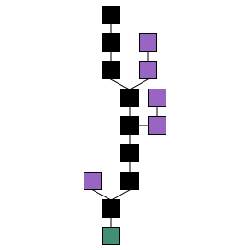
You've probably heard of bitcoin, the digital currency making investors drool over triple-digit returns.
Since January 2017, the market for "cryptocurrencies," or cryptographically-secured currencies like bitcoin, has exploded, growing from around $18 billion at the beginning of this year to more than $170 billion in October 2017. This extreme expansion has some calling cryptocurrencies the next "tulip fever," referencing a speculative craze that swept 17th century Holland and is considered the first modern economic bubble. However, others believe cryptocurrencies are the greatest wealth-building opportunity in history.
The reality is a little more complex. There are more than 1,000 different cryptocurrencies, with bitcoin being just one (and the first). However, bitcoin is responsible for more than half of the entire cryptocurrency market capitalization. Other notable cryptos, such as Ethereum and Ripple, also have market caps in the tens of billions of dollars.
However, one commonality between many cryptos—and a major reason there's so much interest in the market—is that they are built on a technology called blockchain, which could revolutionize how the entire planet lives, works, and spends money.
What is blockchain?
It starts with a hash, which is a series of random numbers that are like "a fingerprint of some digital data," explains Anders Brownworth in this video. This fingerprint is unique to the data being stored, so having the fingerprint means having the data. The data can be anything from a single sentence to a massive dataset. It can even be a record of transactions, which is how blockchain relates to cryptocurrencies.
When you use a hash to store a series of transactions, you can string together multiple blocks of hashes into a chain of blocks (or "blockchain") and run a currency on top of it. This amounts to a "ledger," which is public. In the case of bitcoin, the transaction ledger is stored and verified by many computers in many different jurisdictions.
This makes the ledger immutable: transactions are public knowledge (though the identities of the transaction's parties are not) and immune to tampering, which provides both anonymity and security. Using bitcoin, individuals can transact value using nothing more than the Internet, in a way where both parties can be sure their transaction is verified by the network—all without the involvement of a government body or bank.
Back in 2009 when bitcoin was created, the decentralized nature of blockchain technology appealed to a small hardcore group of libertarian-minded users who wished to transact value without government involvement. Today, bitcoin is accepted by some businesses as valid payment—and it's now recognized as a method of payment by governments including Sweden and Japan.
The increased ability to use bitcoin in exchange for goods of value has, in part, contributed to its surge in market cap. However, bitcoin is only part of the story; the underlying nature of blockchain has many more uses than just payment.
Why blockchain?
Blockchain doesn't have to be used for currency. Cryptocurrencies today have "tokens" that are exchanged for fiat currency online, and many have taken part in initial coin offerings (ICOs) to raise cash for their projects. But that doesn't mean every cryptocurrency project is developing a form of payment; blockchain can be used for any type of transaction.
For instance, Ethereum is a platform built on blockchain that allows the creation of decentralized apps. Its currency, Ether, is the second-largest cryptocurrency (by market cap) currently traded. Ethereum enables the creation of "smart contracts" that execute when certain parameters are met. These smart contract transactions occur automatically, instantaneously, and securely. Applied correctly, they have the potential to transform contracts used for purchases of goods in almost any scenario.
Consider, instead of sitting down and signing paperwork physically or electronically, an Ethereum-based smart contract application could automatically execute whenever the conditions you specify are met. In the process, they eliminate third parties (like a bank, government, or corporation) and execute in a fully distributed public ledger, which theoretically reduces fraud and improves transaction security.
That process is made possible, describes blockchain training technology educational platform for learning Blockgeeks, by "Turing complete software that runs on the Ethereum network," which enables "anyone to run any program, regardless of the programming language." This makes it far easier for developers to create blockchain applications. And while smart contracts are one big draw of blockchain, the reality is that with a platform like Ethereum, developers are free to experiment with and apply blockchain's distributed ledger in ways we haven't even thought of yet.
Thanks to blockchain technology, we have a potential decentralized currency in bitcoin (and other cryptocurrencies gaining adoption for payments) and a decentralized transaction network in Ethereum.
These two applications alone could have massive implications for how value is transacted in the global economy, to say nothing of the hundreds of other cryptocurrencies being developed on blockchain to disrupt everything from voting to social media to fundraising.
Logan Kugler is a freelance technology writer based in Tampa, FL. He has written for over 60 major publications.



Join the Discussion (0)
Become a Member or Sign In to Post a Comment